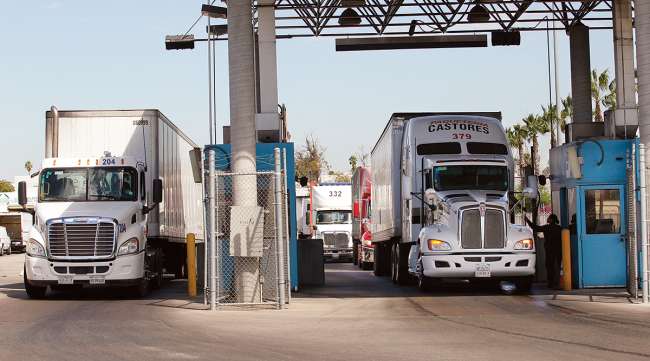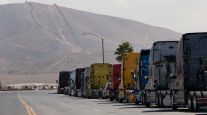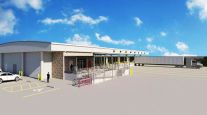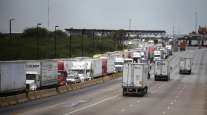San Diego Union-Tribune
Scanning Every Vehicle Could Cause Border Backups

[Stay on top of transportation news: Get TTNews in your inbox.]
A new U.S. law signed Jan. 5 requires every vehicle, truck and freight train that crosses into the United States from Mexico or Canada to be scanned and inspected at ports of entry with X-ray or similar technology.
If enforced, the new scanning requirements could cause major traffic congestion at the San Ysidro Port of Entry, and cost Otay Mesa cargo importers millions of dollars a day.
In recent years, border agents have been increasingly using X-ray technology to detect illegal drugs and weapons. For example, Customs and Border Protection officers used an X-ray machine in June 2019 to detect 254 pounds of deadly fentanyl hidden in a tractor-trailer of cucumbers at the Nogales border-crossing in Arizona.
Currently, only about 1% of personal vehicles and 15% of cargo trucks entering through land ports are scanned, mostly at the U.S.- Mexico border, according to CBP.
The Securing America’s Ports Act (H.R. 5273), signed into law by former President Donald Trump shortly before he left office, orders the Department of Homeland Security to develop and implement “a plan to expeditiously scan all commercial and passenger vehicles entering the United States at a land port of entry using large-scale nonintrusive inspection systems, such as X-ray and gamma-ray imaging systems, or similar technology,” according to a summary of the bill.
The legislation calls for DHS to report to Congress the status of the X-ray systems currently in use, the estimated costs of upgrading those systems to reach a 100% scan rate and the anticipated impact on wait times for vehicles crossing the northern and southern borders. DHS has 180 days from the signing of the law to submit its report to Congress, which would make the report due approximately midsummer.
The idea to scan 100% of inbound cargo is not new, with attention to cargo security ramping up after 9/11, but it would be difficult to implement, according to experts. CBP has been using drive-through X-ray machines since 2008. The first machine, called a Z Portal, was inaugurated in San Ysidro.
The challenge is for CBP to balance the need to keep vehicles moving efficiently across the border with the task of checking for illegal drugs and weapons and complying with the new 100% scanning mandate. A 2019 CBP report highlights the time and cost of scanning about 15% of incoming commercial cargo.
On any given day, $6.3 billion of legal cargo passes northbound through U.S. ports of entry. Any slight disruption in operations — or even just the threat of it — can significantly slow down cross-border commerce.
In 2019, severe traffic congestion caused by a shift in Customs agents to handle immigration surges cost millions of dollars a day and disrupted U.S. supply chains.
Thad Bingel, a former senior leader at CBP, said the agency may likely treat the goal as “aspirational” rather than a literal near-term target.
“They may come back and say, ‘Yes, we can expand our scanning capabilities to 100% and here’s what it’s going to cost,’” said Bingel, adding it might not be necessary to scan every single vehicle that crosses the border.
Want more news? Listen to today's daily briefing below or go here for more info:
Distributed by Tribune Content Agency, LLC




